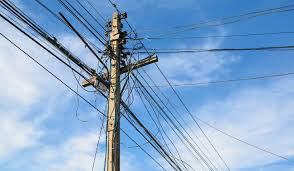
With the impending discontinuation of the hard copper (POTS) phone lines, and in fact many municipalities already no longer have hard copper pairs from end user to the fire department dispatch center, is it a violation of NFPA 72 if the DACT connections to the fire department use PBX phone lines?
Some fire alarm system companies are telling customers that they must utilize a different method of communication, however end users that have an IP based phone system are asking if they can simply designate two analog phone lines from their PBX system to the DACT, eliminating the POTS connection.
Per NFPA 72 (2010) Chap. 26.6.3.2, end users may continue to use phone lines for a monitoring station connection. However, if the fire alarm vendor is saying they must use a different method, it may be due to the monitoring station’s discontinuation of DACT reporting. They should verify that with the vendor. Most monitoring stations have DACT, radio and cellular receivers, but some are discontinuing DACT receiving to standardize communication methods. Here are your options:
- If an end user is connected to a monitoring station that’s dropping DACT receivers, they can switch to a new monitoring station that still has it.
- If they’re directly connected to a fire department that’s dropping it, they can see if they’re allowed to use a monitoring station for monitoring instead. If not, they have to match the method the fire department is using and will have to install the new equipment.
- If DACT monitoring is in fact not being dropped, they can ride that horse until discontinued by the monitoring agency or the lines die, but I’d advise setting up a new method so they can control the costs before it becomes an emergency.
Getting back to the original question, switching to IP based phone lines would still use the existing DACT transmitter, but without getting too technical, it comes with a few conditions:
- There has to be a dial tone on the IP phone lines when the receiver is picked up (loop started). If you have to dial a number to get a dial tone (ground started), you can’t use it.
- The DACT communication out of the fire panel must now be converted into IP packets at the source, then reassembled into digital signals at the receiver. Assuming the end user has an IP based PBX system, the monitoring station must have an IP converter. The end user needs to confirm this with the monitoring station.
- The power for the phone system must be backed up by the emergency generator and/or an appropriate sized UPS.
It may seem like it shouldn’t be a big deal, but changing communication methods always involves new equipment. The costs & legwork involved in staying with phone lines may be more than it’s worth compared to just installing the new equipment, which is probably a radio. Keep in mind that you’ll have to change it out in the not too distant future anyway.
To summarize, as long as the PBX lines being used can be constantly supervised by the DACT and seized when needed, it’s a code compliant method of off premises transmission. There’s no specific prohibition on methods of transmissions, only that the pathway must be automatically supervised by the transmitter, reliably backed up and always available. NFPA (2010) Chap. 26.6.3.2 can be referenced for information on using DACTs and specifically Chap. 26.6.3.2.1(1-3) for DACT requirements.
Change can be painful, but not if you use Affiliated Fire Systems to install Gamewell-FCI products. With 35 years of experience, we get to the proper solution right away and ensure it’s done in the most cost efficient manner. Contact us for more information on how we can help keep you code compliant.
Gene Rowe Affiliated Fire Systems;Downers Grove, IL


Send us a Comment